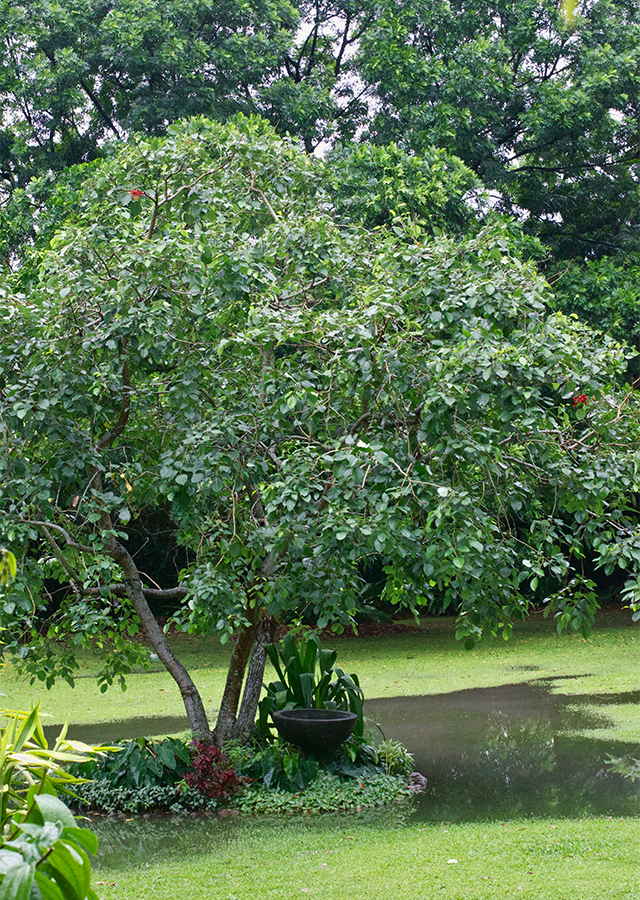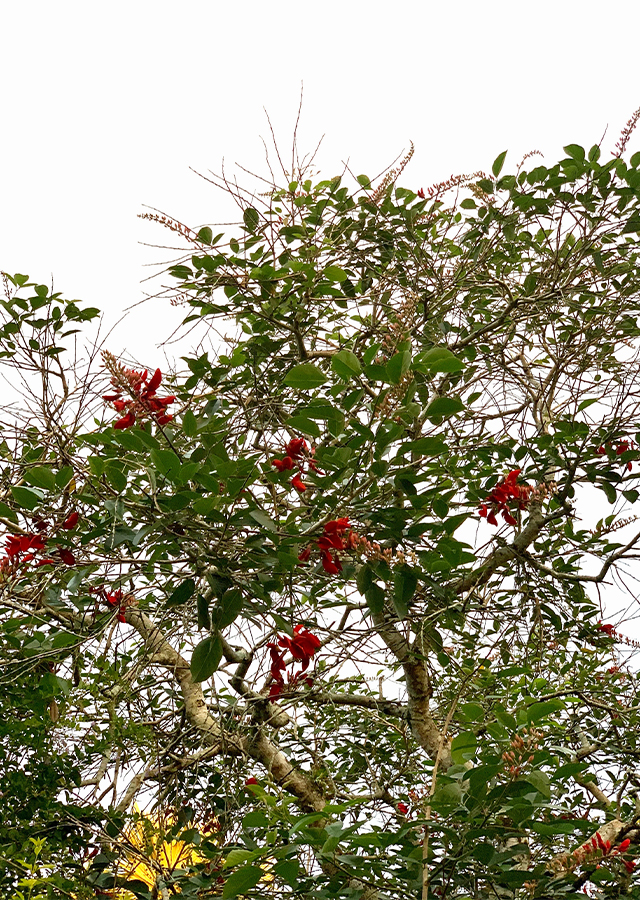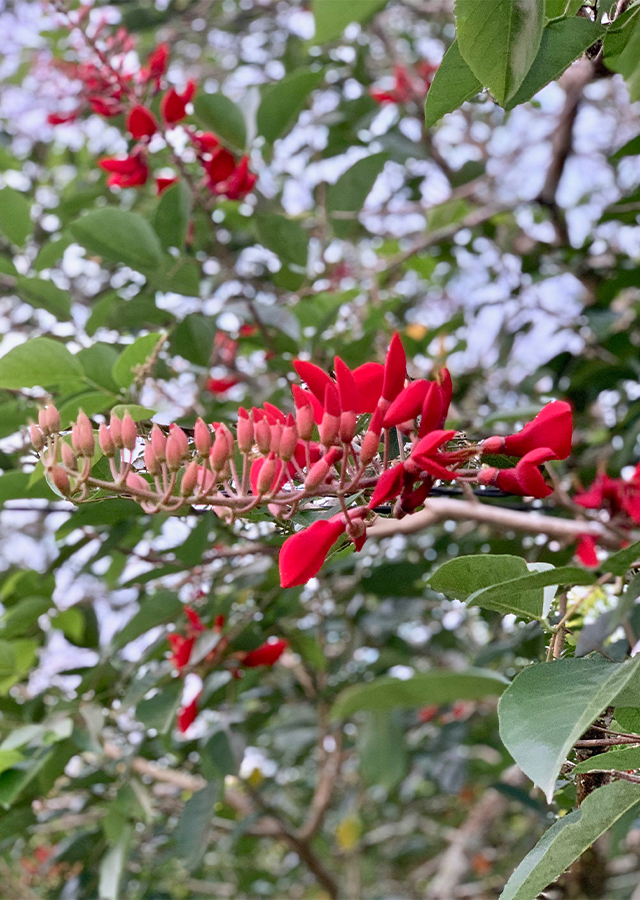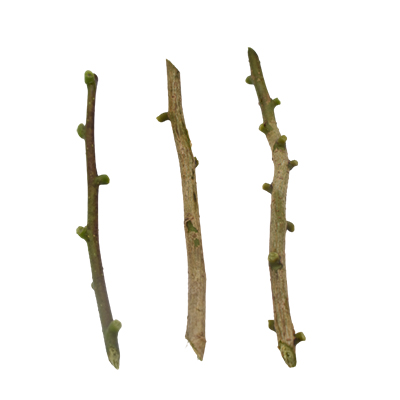Coral tree
Erythrina crista-galli L.
Fabaceae
Location in our garden
Orchard



Synonym
Habitus
Trees. A perenial spreading, deciduous tree legume, grows up to 18-25 m tall.
Part Used
Leaves
Seeds
Bark
Roots
Twigs
Growing Requirements
Full Sunshine
Drought Resistant
Habitat
Wetland
Riverbanks
Grassland
Overview
it is native to tropical Asia from Taiwan and southern China via the Philippines, Indonesia, Malaysia, Thailand, Myanmar, India, the islands in the Indian Ocean and all the way to tropical East Africa. Introduced and naturalized in tropical countries in America and Africa as well.
Vernacular Names
Indischer Korallenbaum (German), Arbreau Corail (French), Mandar (Bangladesh), Hai Tong Pi (Chinese). Cenkering (Malaysia), Dapdap (Philippnines).
Agroecology
An adaptable species that grows in the humidtropic, subtropical and semi-arid regions, occurring in zones with mean annual temperatures of 20 - 32 °C and mean annual precipitation of 800-1,500 mm with rainy periods of 5-6 months. It occurs wild in deciduous forests to an elevation of 1,500 m from the coastal dunes and forests.
Morphology
- Stems - stout and armed with short, few to many sharp prickles, branches and branchlets.
- Leaves - alternate, trifoliate, 20 to 30 cm long, leaflet-stalk glandular, the terminal highest. Leaflets are triangular with acuminate tips and obtuse bases, shining green, to broadly rhomboid-ovate.
- Flowers - bright red, calyx tubular, minutely 5-toothed, corolla long, standard broad, ovate- elliptical, shortly clawed and 7–9cm l ong, wings and keel subequal.
- Pods - shiny, reddish brown reniform seeds are black, cylindrical, up to 38 cm long, dehiscent and con-stricted. There are 5–10 seeds in each pod.
- Fruit - 10-14 cm (4-5.6 in) long, sterile, compressed, broadly oblong pod in the basal portion and not constricted between the 5-10 dark brown seeds.
- Seeds - kidney-shaped, dark purple to red, and 1–1.5 cm (0.4–0.6 in) in length.
Cultivation
- From seed or large stem cuttings, it is successfully propagated. The seed should be scarified by soaking for 10 minutes in hot water (80 °C) and then overnight in tepid water.
- Woody cuttings establish best under dry conditions.
Chemical Constituents
Erysodine, erysotrine, erythraline, erysopine , alkaloids, mellein, nectriapyrone, scyoalone, tyrosol, clavatol, mevinic acid, mevalonolactone.
Traditional Medicinal Uses
- In the leaves and seeds, alkaloids are found in low amounts, giving them narcotic properties.
- The flowers are bechic and are used for the treatment of chest disorders.
- The bark is used in ophthalmia and skin diseases as a laxative, diuretic, expectorant, febrifuge, anti-bilious and anthelmintic astringent, and is useful.
- The leaves are used as laxatives, diuretics and expectorants for fever, inflammation and joint pain.
- The root decoction is used as a gargle for loose and aching teeth and as a bronchitis infusion.
- Seeds for tumors, used internally and externally, and for abscesses externally.
- Dysentery is handled using a decoction of the bark and leaves. When sweetened, a strong expectorant is considered.
Part Used
Reference Sources
- Lim, T.K. (2014). Edible Medicinal and Non-Medicinal Plants. New York. Springer Vol. 7 Flowers page 788
- Winrock International. (1994). ERYTHRINA VARIEGATA – MORE THAN A PRETTY TREE. https://www.winrock.org/factnet-a-lasting-impact/fact-sheets/erythrina-variegata-more-than-a-pretty-tree/ 17-07-2020
- Cabi. (No date). Invasive Species Compendium. Erythrina variegata (Indian coral tree). https://www.cabi.org/isc/datasheet/22055. 20-11-2020
- Ncbi. (2010). Erythrina variegata Linn: A review on morphology, phytochemistry, and pharmacological aspects. https://www.ncbi.nlm.nih.gov/pmc/articles/PMC3249914/ 20-11-2020.
- StuartXchange. (2020). Philippine Medicinal Plants. Dapdap. http://www.stuartxchange.org/Dapdap.html. 20-11-2020.



